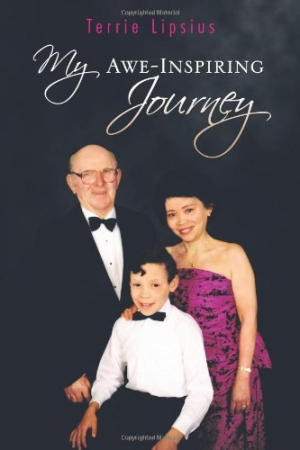My Awe-Inspiring Journey
My Awe-Inspiring Journey is Terrie Lipsius’s account of her life from her childhood in the Philippines to her experiences as an adult in Tasmania, Australia.
Lipsius was born in Aloguinsan, a small rural village in the Philippines. When she was thirty-one years old, she began corresponding with an Australian named John Lipsius, whom she married soon after and followed back to Australia. The couple settled in Savage River, a small town in Tasmania. Here, Terrie Lipsius faced the demands of not only learning a new culture but also taking on the new roles of wife, teacher, and mother.
Though the opening line, “I would like to share with you my amazing journey through life so far,” leaves something to be desired, Lipsius paints a beguiling portrait of life. She describes the rituals of making bread, starching clothes, and enjoying the major celebrations in Aloguinsan. The description of Lipsius singing with a strong Aloguinsan accent is sweetly conveyed: “I hab to hands, the let and the right. / Hol de na pie so kle a bry.” (I have two hands, the left and the right. Hold them up high, so clean and bright.)
Lipsius’s down-to-earth and somewhat endearing first-person narrative reveals her docile and agreeable personality, which proves to be both her strength and her weakness. Her sweet nature makes her popular with her students but also allows others to take advantage of her. For example, when her sister in the Philippines is pregnant, Lipsius helps her but is treated as an indentured servant rather than as a family member. A similar thing happens when Lipsius first moves to Australia and lands a job in a school. A male teacher regards her not as a teacher but as his maid, and actually brings her clothing that needs mending.
Lipsius encounters many challenges that force her to grow and to become more confident and proactive, both as a teacher and as a member of the community. Though she describes some aspects of the Australian school system and how she designs lesson plans and runs her class, she does not describe the students or the school in any detail. And although her stories often hint at something more intriguing, most of the narrative remains superficial. In describing her first encounter with her Australian pen pal, the man she would eventually marry, she merely tells how her friends confirm his identity at the airport. She follows that with, “After the hugs and kisses, the other women introduced me to John. What an introduction!” Likewise, the author condenses the first four weeks of her future husband’s first visit in the Philippines to little more than one line: “John had a wonderful time during his stay in Cebu City.” This lack of detail makes the narrative read as a rushed, unfinished report rather than a rich depiction of a woman’s physical and emotional journey.
Lack of detail and the use of clichéd images and expressions to characterize milestones and life-changing events also make it difficult for the reader to become fully invested in the story. “Watching my son carrying his tiny Thomas the Tank Engine school bag was enough to trigger tears. My baby wasn’t a baby any more—he was beginning to grow up.”
There is a series of eleven black-and-white photographs (mostly of the author, her husband, and their son) at the end of the book; two of the photos appear in color as the front and back cover. These serve to illustrate certain events in the narrative, but there are no captions to provide specifics.
Although the book does highlight a few aspects of the author’s life within two different cultures, the audience of this book may be limited to people who actually know the author. That is because the description of the family, friends, and acquaintances of the author never quite come alive enough to engage the general reader.
Reviewed by
Maya Fleischmann
Disclosure: This article is not an endorsement, but a review. The publisher of this book provided free copies of the book and paid a small fee to have their book reviewed by a professional reviewer. Foreword Reviews and Clarion Reviews make no guarantee that the publisher will receive a positive review. Foreword Magazine, Inc. is disclosing this in accordance with the Federal Trade Commission’s 16 CFR, Part 255.

